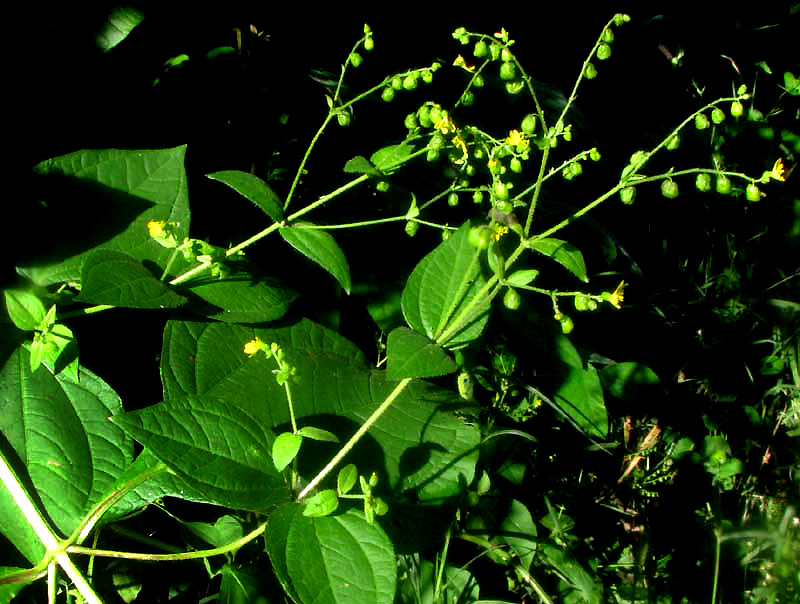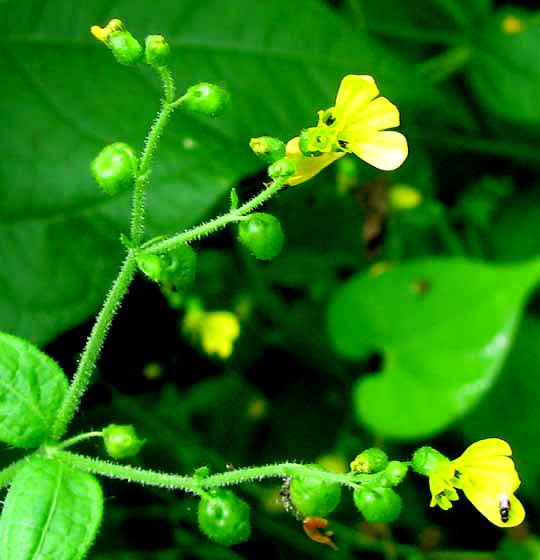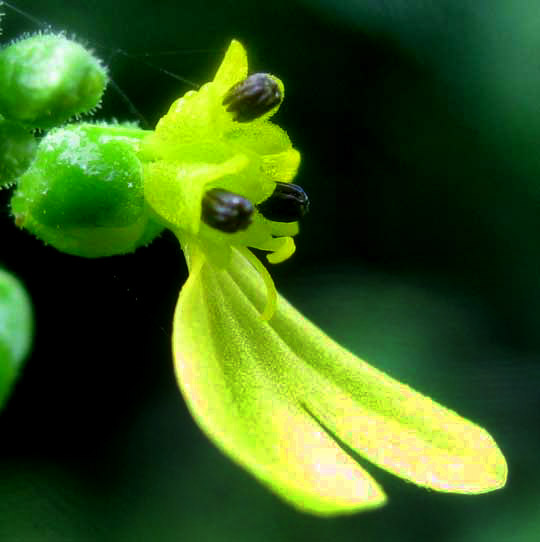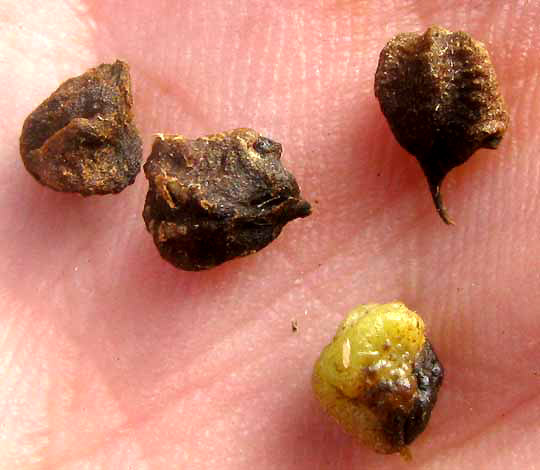Excerpts from Jim Conrad's
Naturalist Newsletter

from the November 13, 2011 Newsletter issued from Hacienda Chichen Resort beside Chichén Itzá Ruins; limestone bedrock; elevation ~39m (~128ft), N20.675°, W88.569°; central Yucatán state, MÉXICO
COCOLMECA
I like it when an organism teases me with very inaccurate first impressions, then toyingly yields first one little secret, then another, until maybe finally I can figure out its identity and look it up. That's what a certain common, shoulder-high weed with yellow, pea-sized flowers growing along a trail here did to me the other day. You can see a branch of it above.
The tricky thing this species did is shown below:

That picture was taken above the two blossoms, so you're looking down on what appears to be two flowers, each with a three-lobed "lip" serving as a landing pad for pollinators. When you see such lower lips you're supposed to think of the Mint, Verbena, Snapdragon or a handful of other families. However, I couldn't think of anything in those families even coming close to this. When I focused my magnifying glass on just one blossom, though, suddenly I understood, seeing what's shown below:

What you're seeing there isn't a flower at all! It's a cluster of four flowers emerging from a cuplike receptacle, which means that this plant is a member of the Composite or Sunflower Family. It's a composite flower composed of three male "disk flowers" at the top (the blackish items being pollen-producing anthers fused along their edges into cylinders, which is typical for Composite Family anthers), then at the bottom there's a single "ray flower" serving as a landing pad for pollinators.
Typically a composite flower with both disk and ray flowers possesses several to many ray flowers. In my whole life I've not met a composite flower habitually producing just one ray flower. This is a weird plant!
The plant's fruits also are unusual for belonging to the Composite Family. You can see some, not at all like fruits of Composite-Family members such as sunflowers, dandelions, asters and zinnias, below:

Usually when you encounter organisms with such outlandish features and you know which family they belong to you can identify it pretty easily, if only by Googling keywords such as "composite" and "3-lobed rays." However, the Yucatán is home to 80 or more genera belonging to the gigantic Composite Family, and there are hundreds of species, so this plant turned out hard to nail down. In fact, after a couple of hours of fruitless internet browsing I had to resort to a secret weapon: Newsletter reader Paul, a biologist with the Centro de Investigación Científica de Yucatán in Mérida. He figured it out using the Flora of Guatemala, which I don't have.
Apparently this plant has no English name. In Spanish it goes by Cocolmeca and Hoja Ancha ("Wide-Leaf"). It's MILLERIA QUINQUEFLORA, Milleria being a genus I'd never heard of.
Looking up the name reveals that the species occurs from southern Mexico through Central America into northern South America. Beyond that, its main claim to fame appears to be its medicinal qualities. An online scientific paper states that in Central America the plant's leaves and stems are used traditionally as remedies for skin infections. The study goes on to report on the helpful effects of "thirteen sesquiterpene lactones" (chemicals) found in the plant. Another website selling medicinal herbs makes so many claims for the plant that you don't believe any of it. Its main effect there is said to be against obesity and the accumulation of cholesterol.